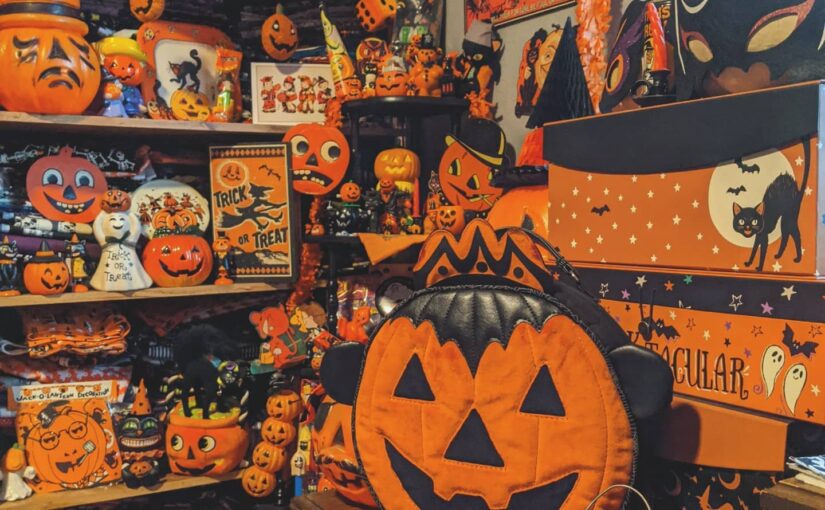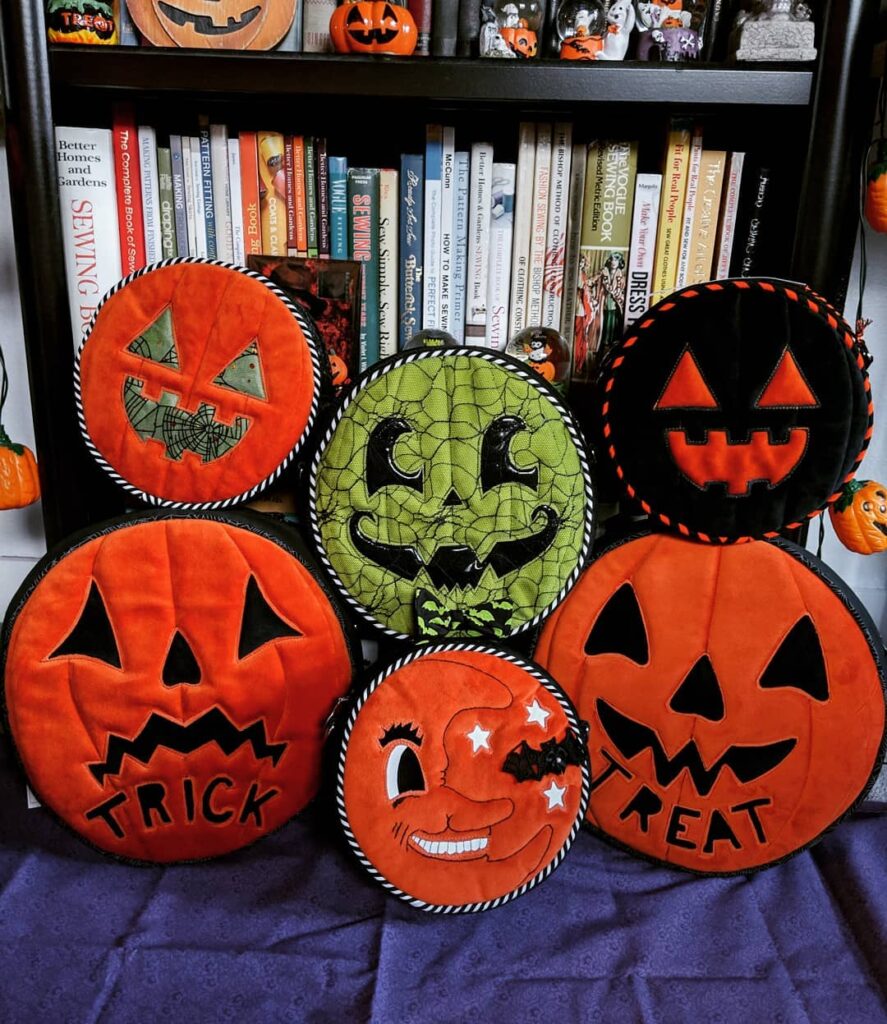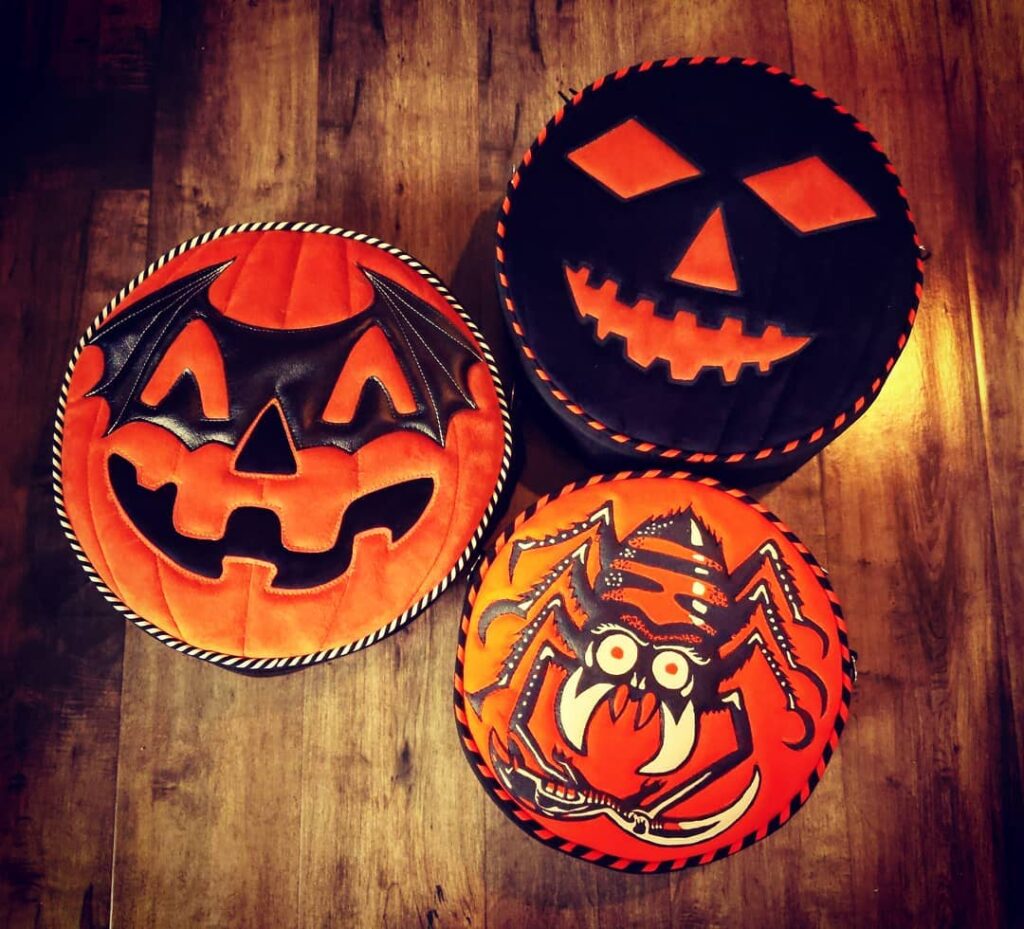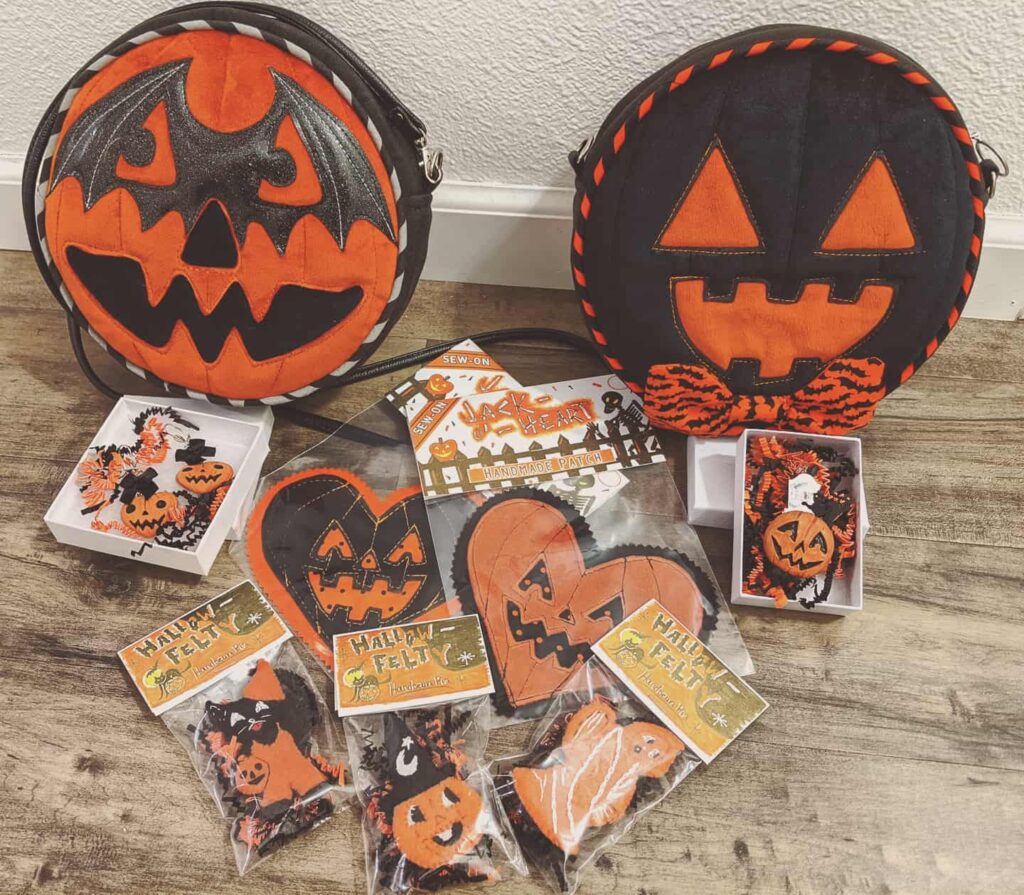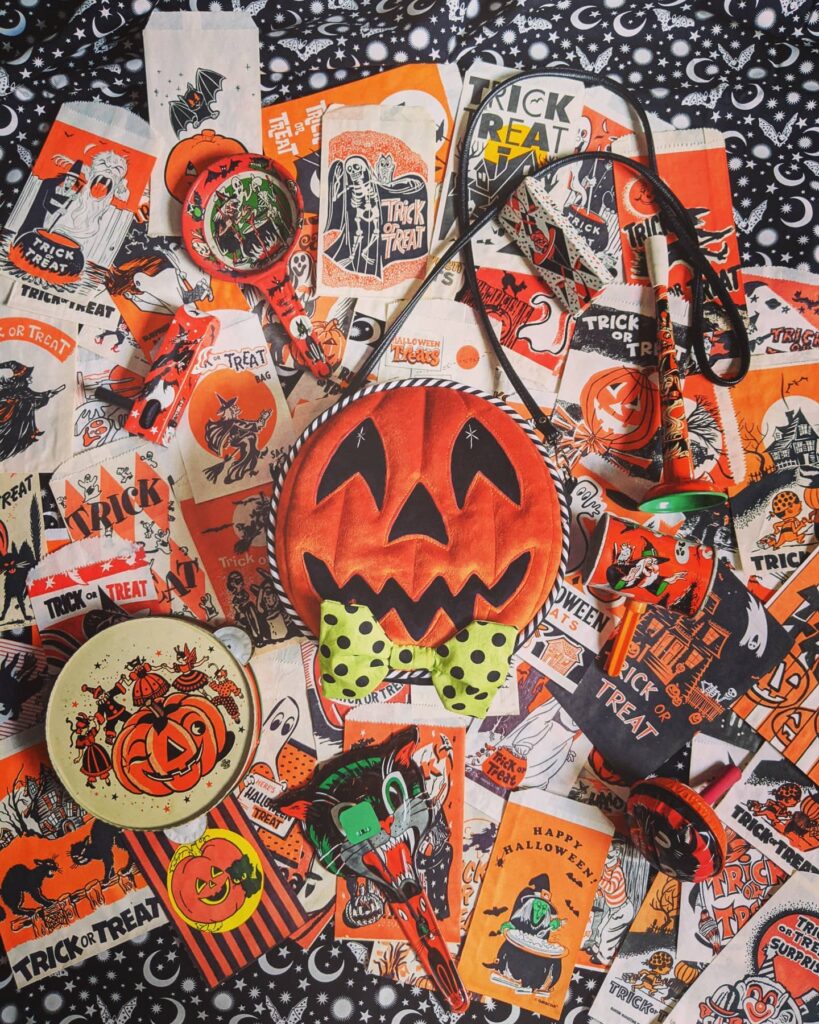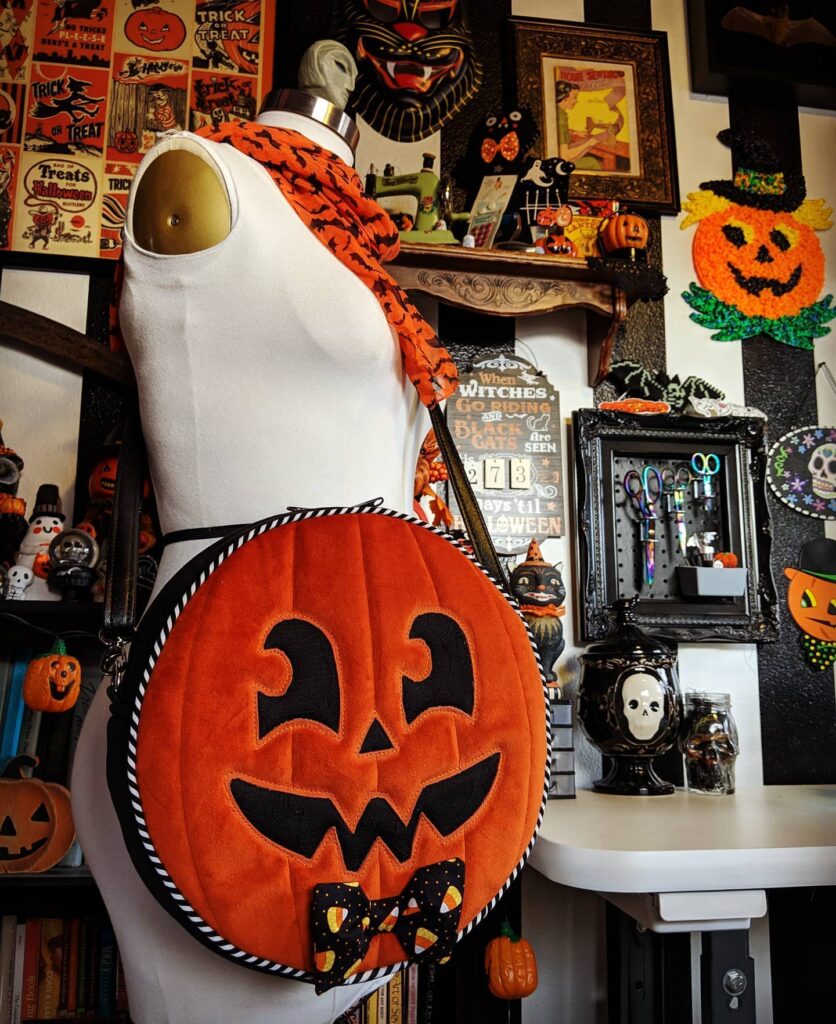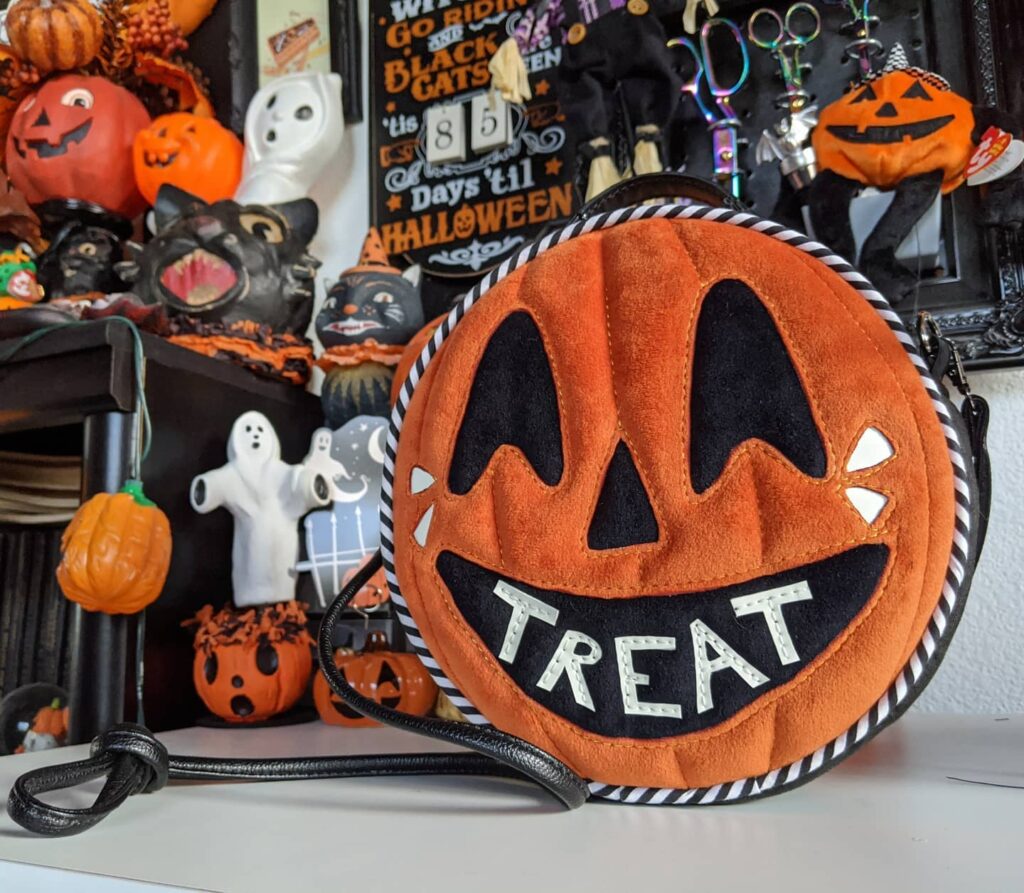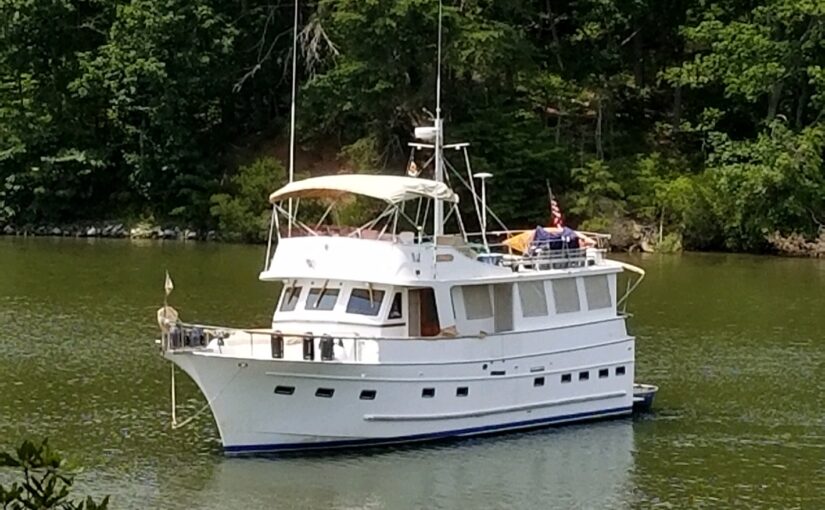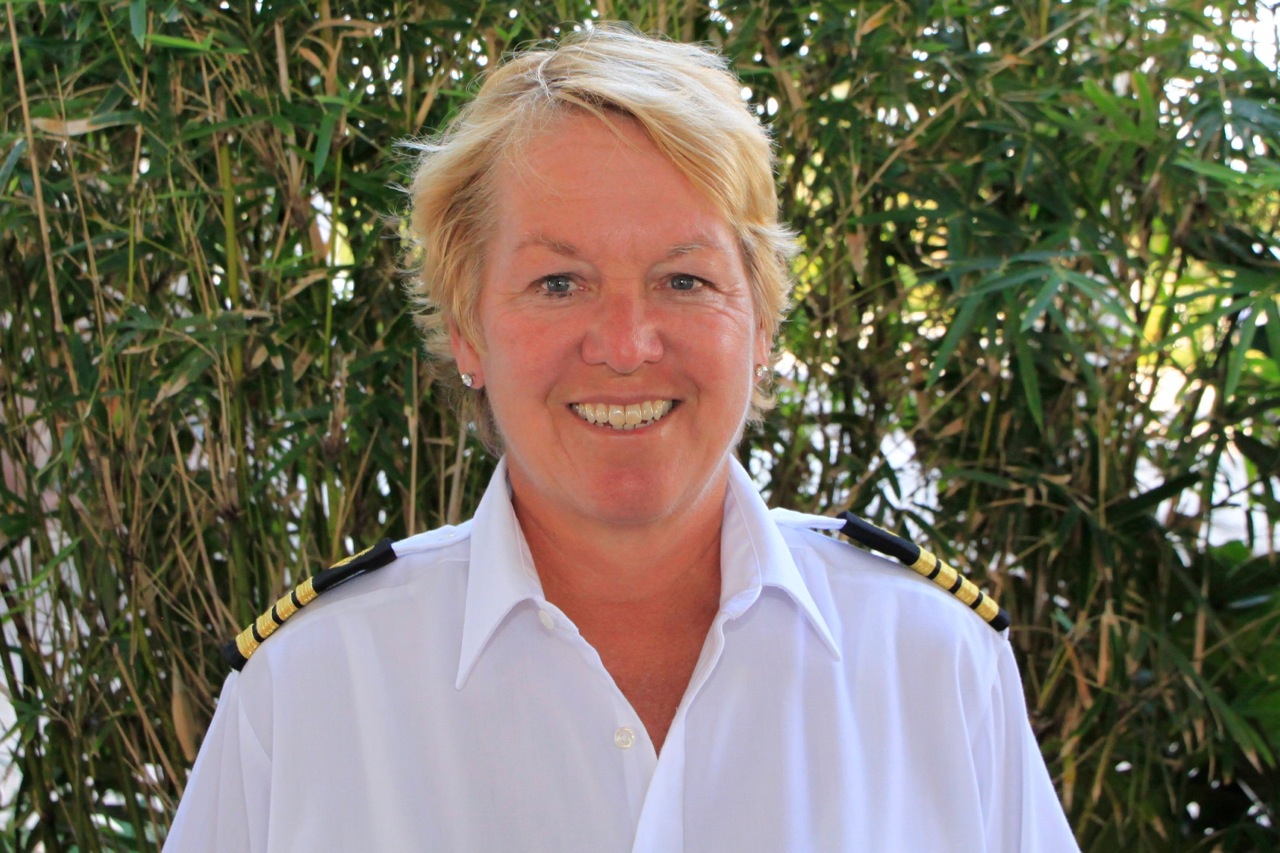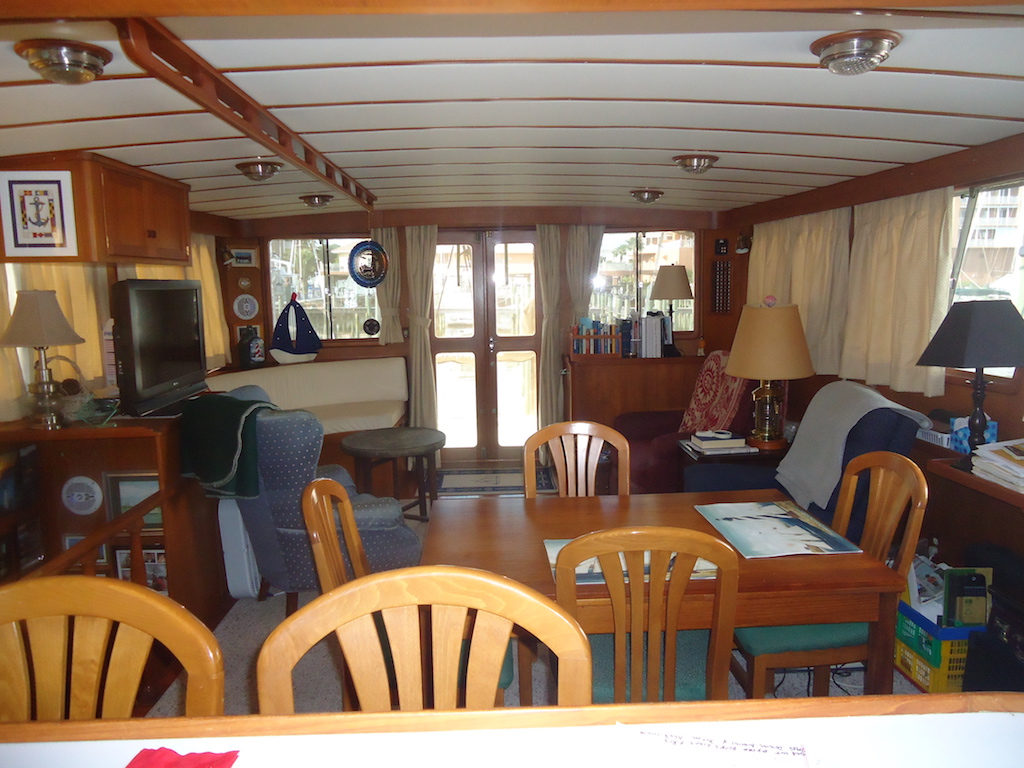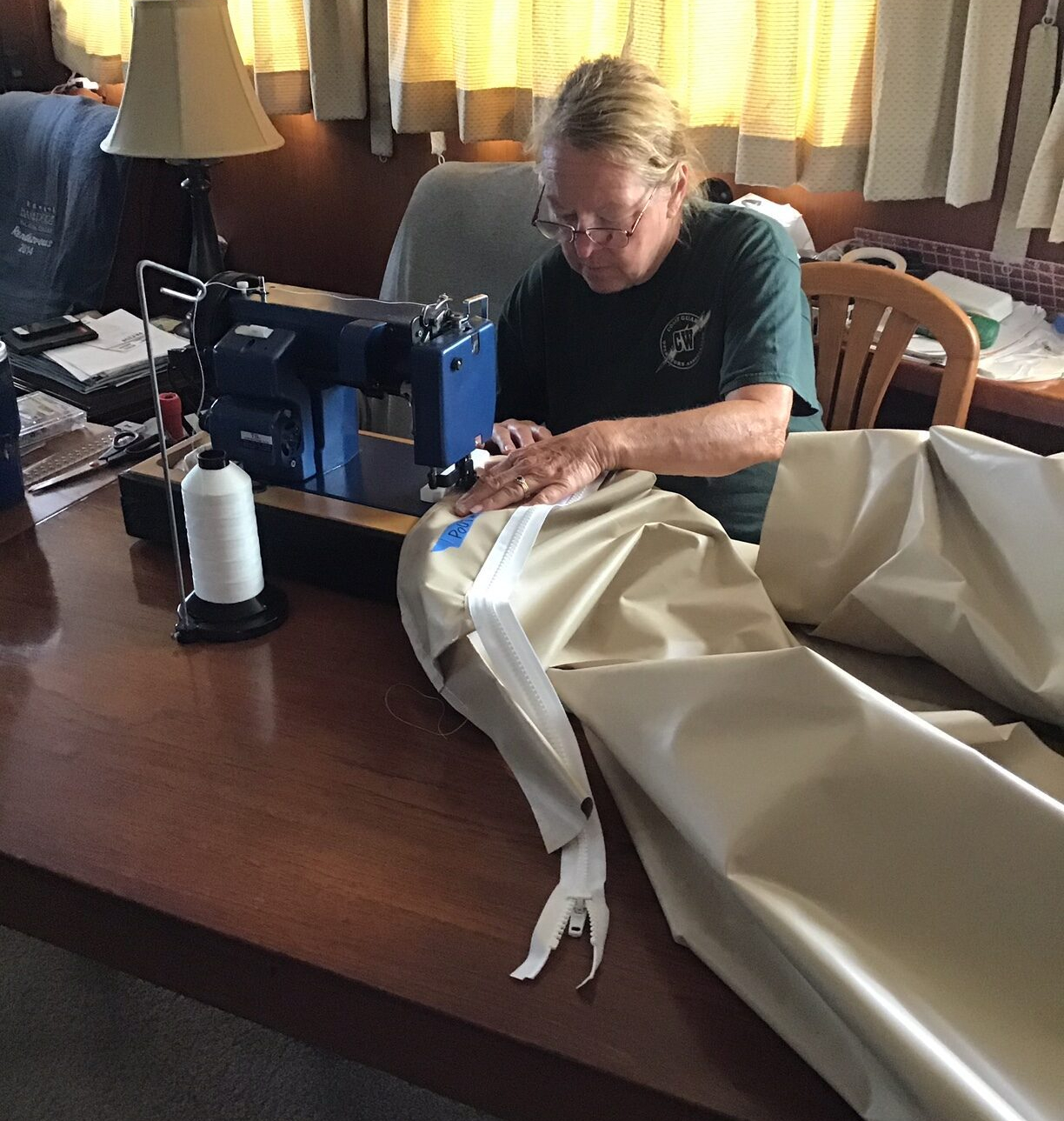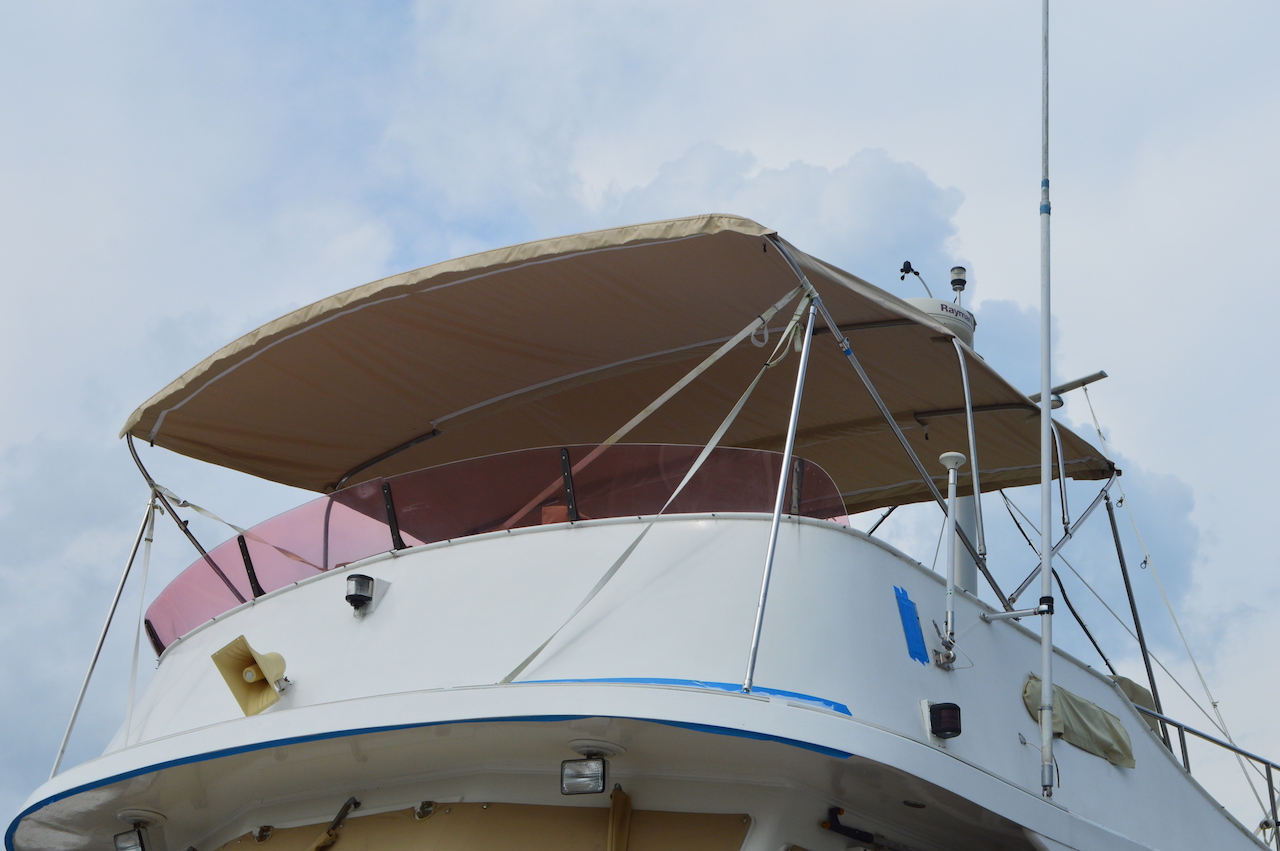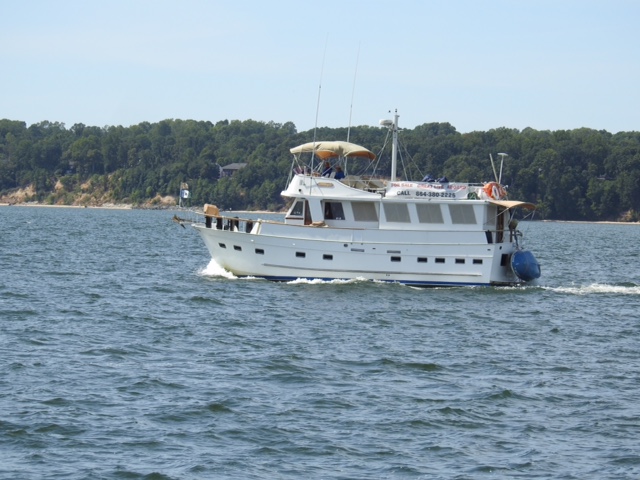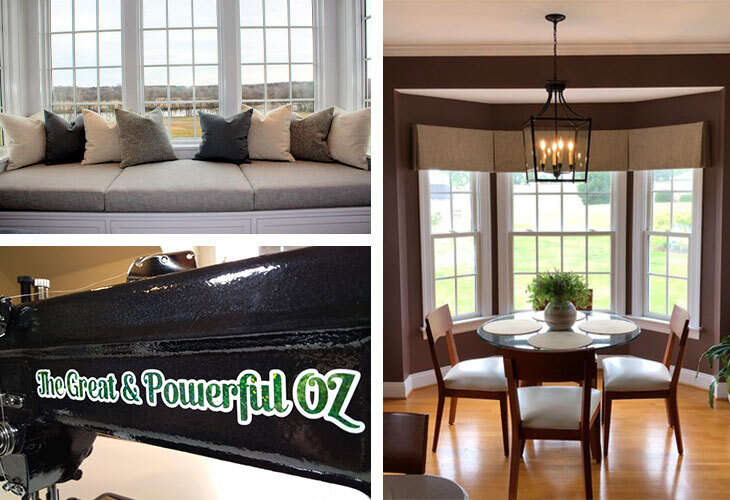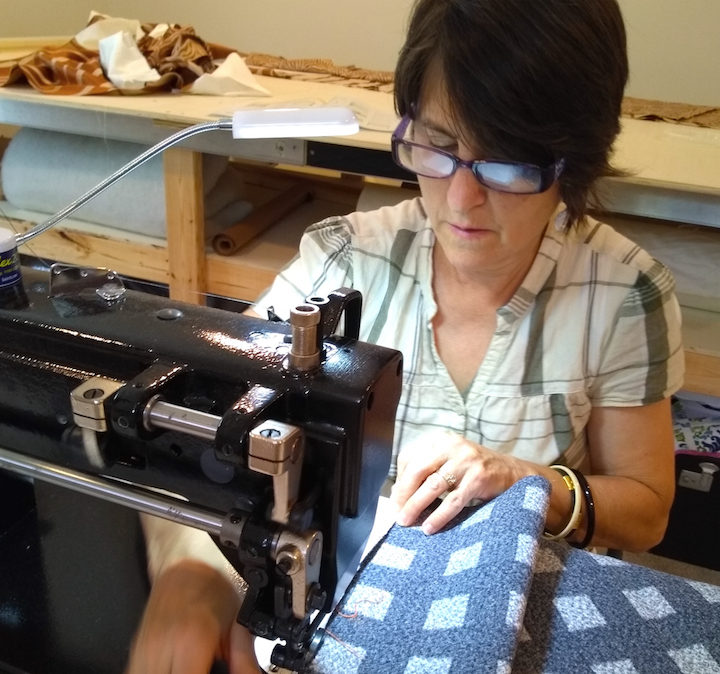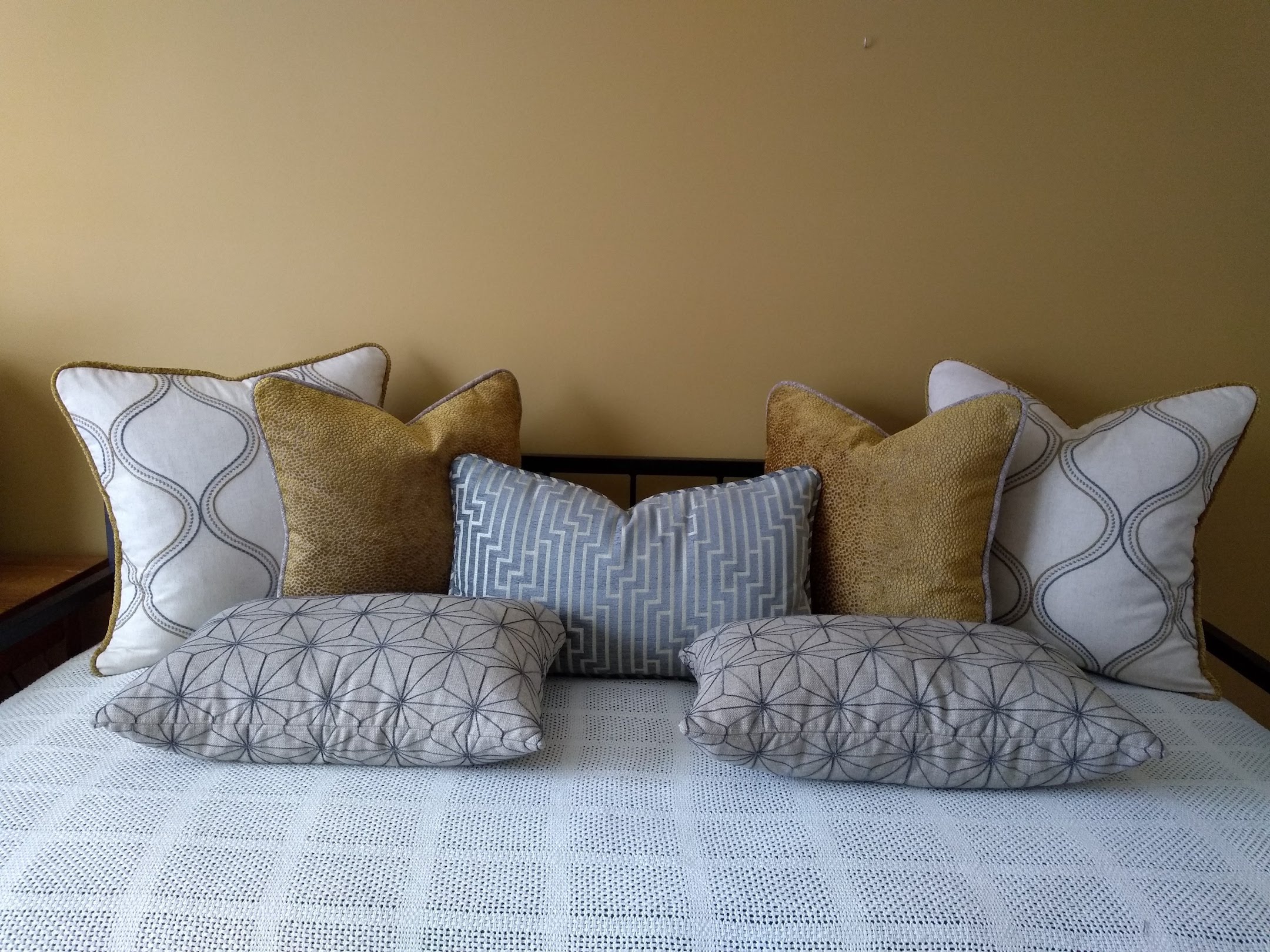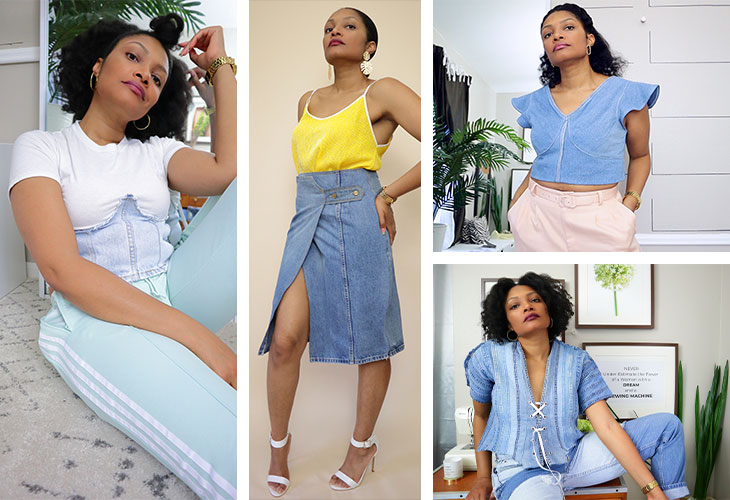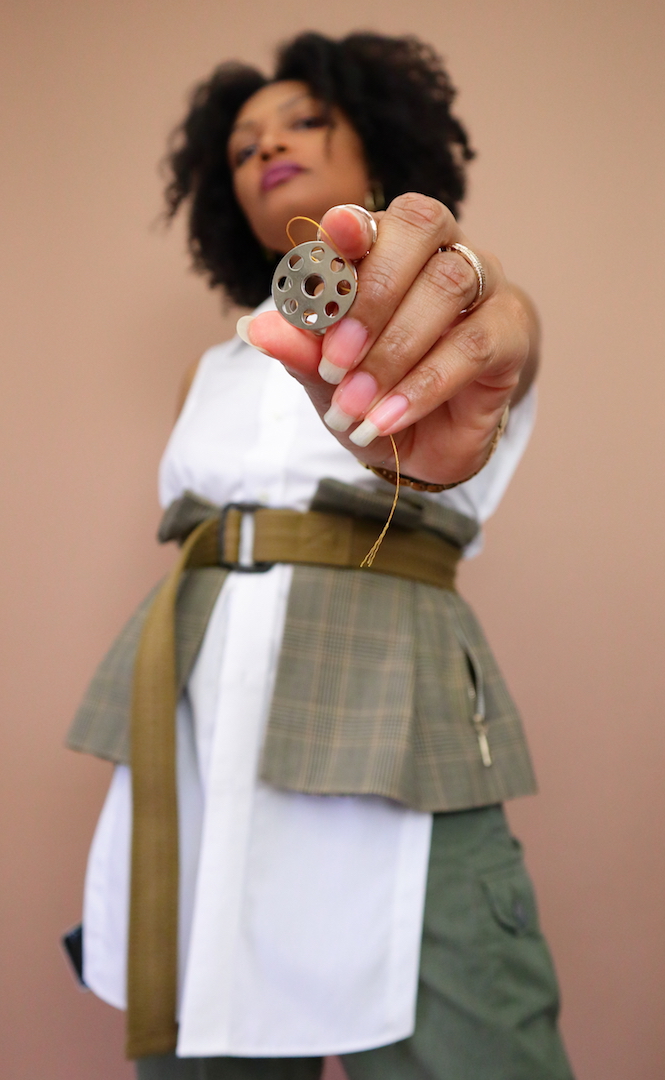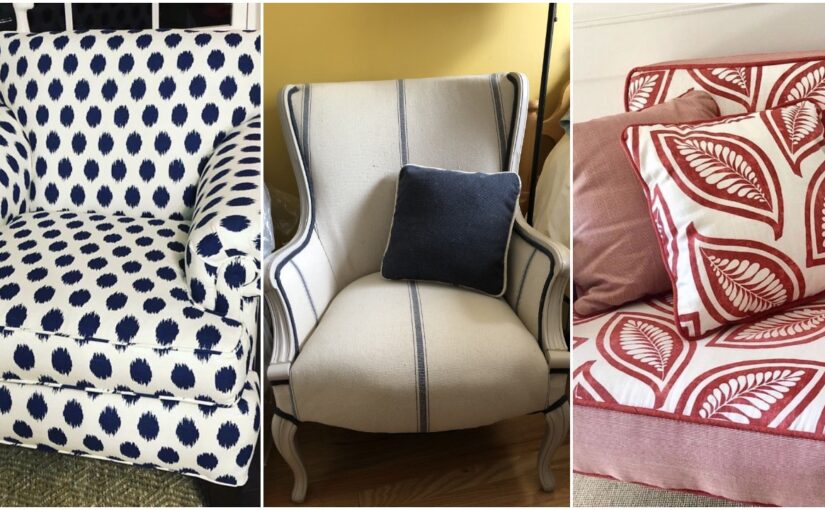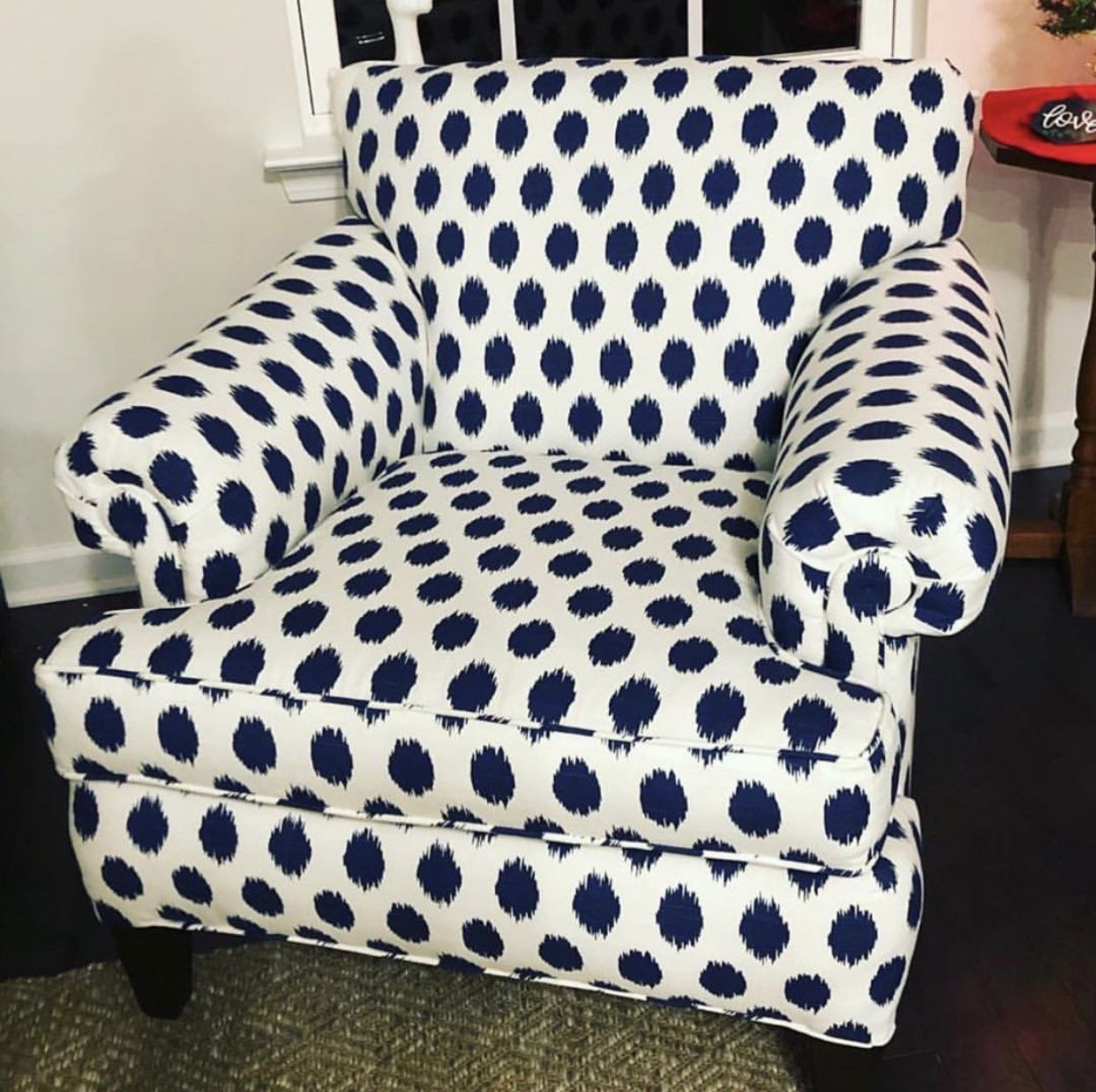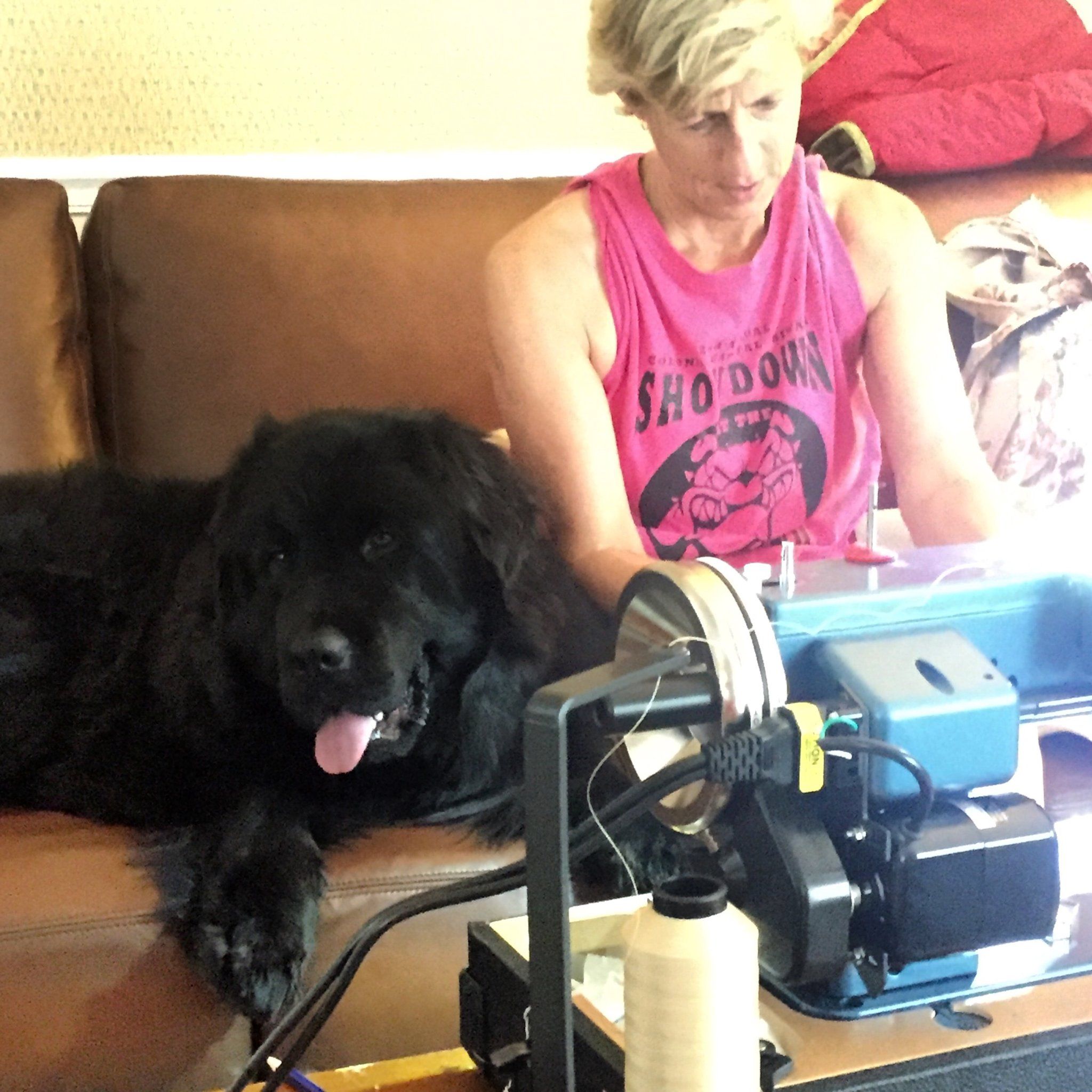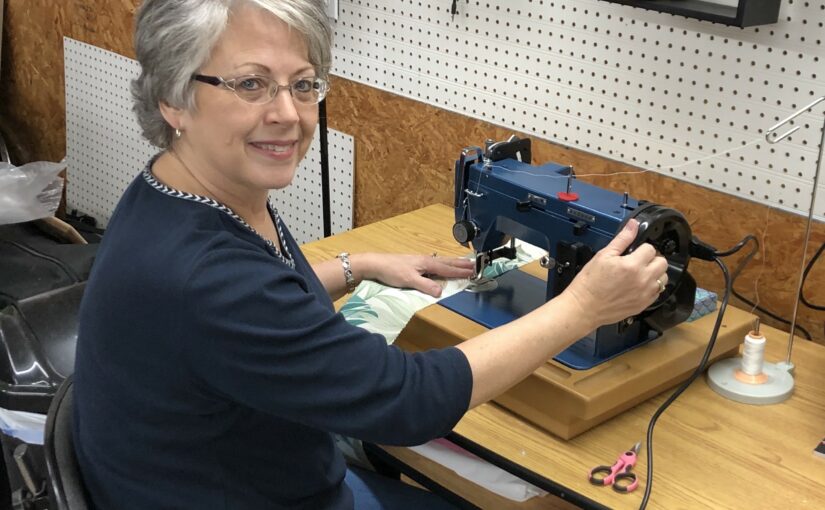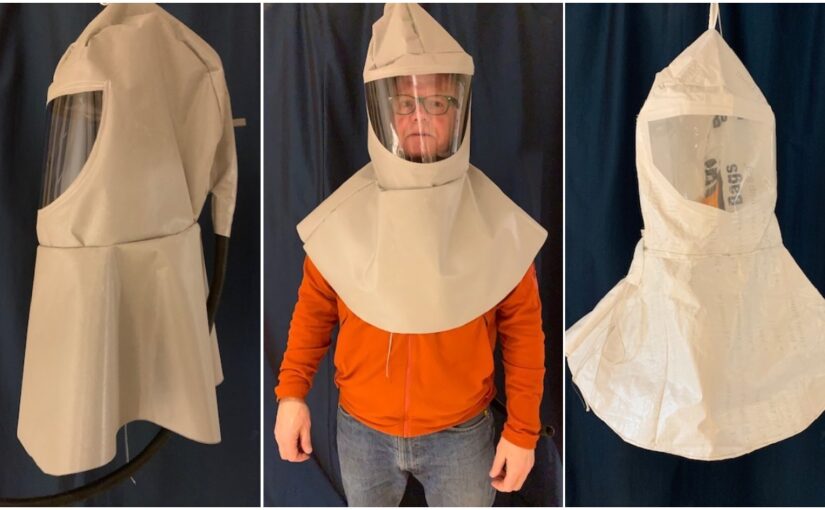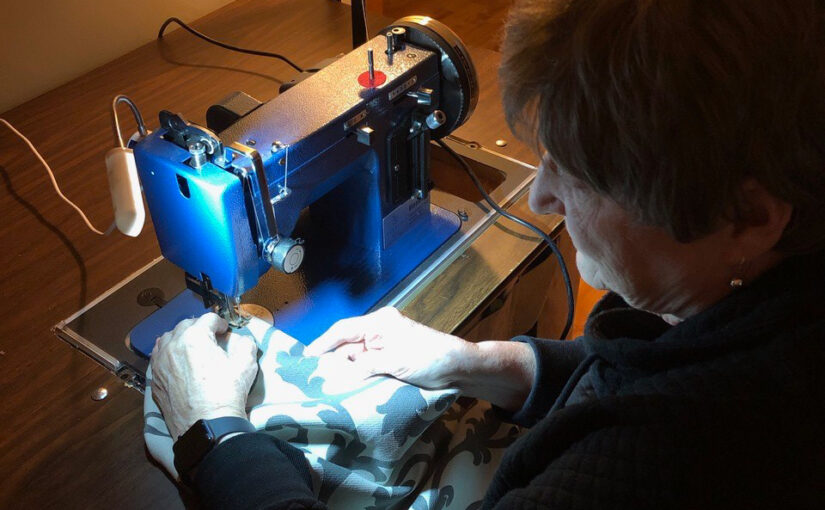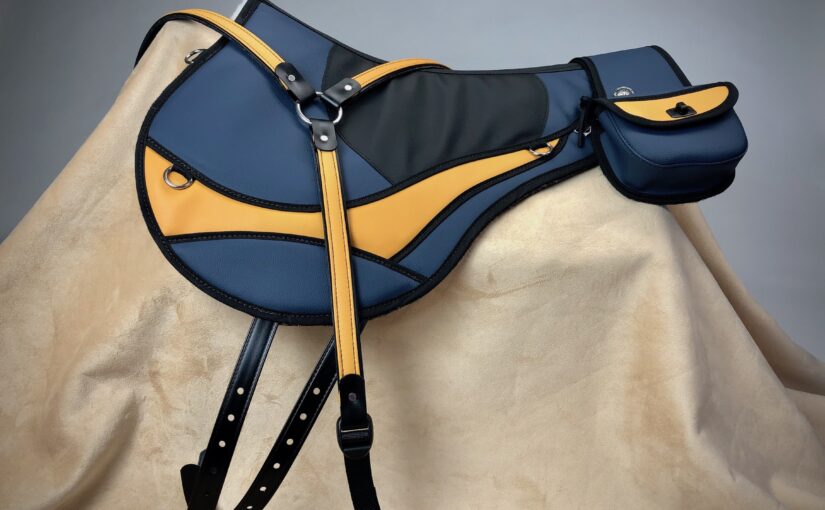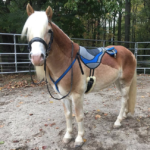Fall is a season filled with colorful leaves, pumpkins and, of course, Halloween. And with the spookiest of seasons approaching, why not focus on a hauntingly talented sewist? Mari Mortem is the founder of the online shop Strange Coven. Her creative spirit and love of all things Halloween even carries over into her ingenious sewing projects — many of which are made using her Sailrite® Fabricator® Sewing Machine. Mari was more than happy to share the story of her sewing endeavors with us, and her skills are nothing short of supernatural!

Q. How and when did you first become interested in sewing?
A. My love for sewing began when I was very young, and it was more of a necessity. Even if I didn’t have access to nice things, sewing was one thing always within reach in my household. I first started learning when I saw what my parents would mend or make. Later on, in my teenage years, I started taking sewing books out of the library to advance what I’d gleaned from my parents. There’s still so much I’ve yet to learn!
Q. What types of projects do you sew?
A. For the last few years I have been almost exclusively sewing purses. Before this shift, I was predominately sewing clothing with just a splash of crafting purses and other accessories.
Q. How did you become a Halloween fan and collector? What drew you to it?
A. Oh Halloween! What to say. Beneath all the scares, the thrills and the chills, there’s a wholesomeness surrounding Halloween that often gets overlooked. Whether you grew up blessed with opportunity, or less fortunate in your circumstance, Halloween is the one day/night that melts away all the pretense, all the divides, all those societal pressures very naturally.
It’s unforced in its message of neighborliness — people come together for their community’s enjoyment, sometimes without really realizing they are doing so. They put together haunted houses and give away candy to all the neighborhood kids, some that have even travelled from other less fortunate neighborhoods, such as I did when I was young. Even when I couldn’t go out, I could be home carving pumpkins, watching them glow through the night, and roasting the seeds. Even if I expect nothing but the pleasure of a chilly evening with pumpkin treats and a spooky movie, I still feel like I’ve participated in the festivities and traditions.
My obsession with collecting true vintage Halloween odds and ends came about because nothing exemplifies this “hidden” wholesomeness quite like Halloween imagery and characters of the past. They’re very sweet and charming, much like I hope to revive in my own work!
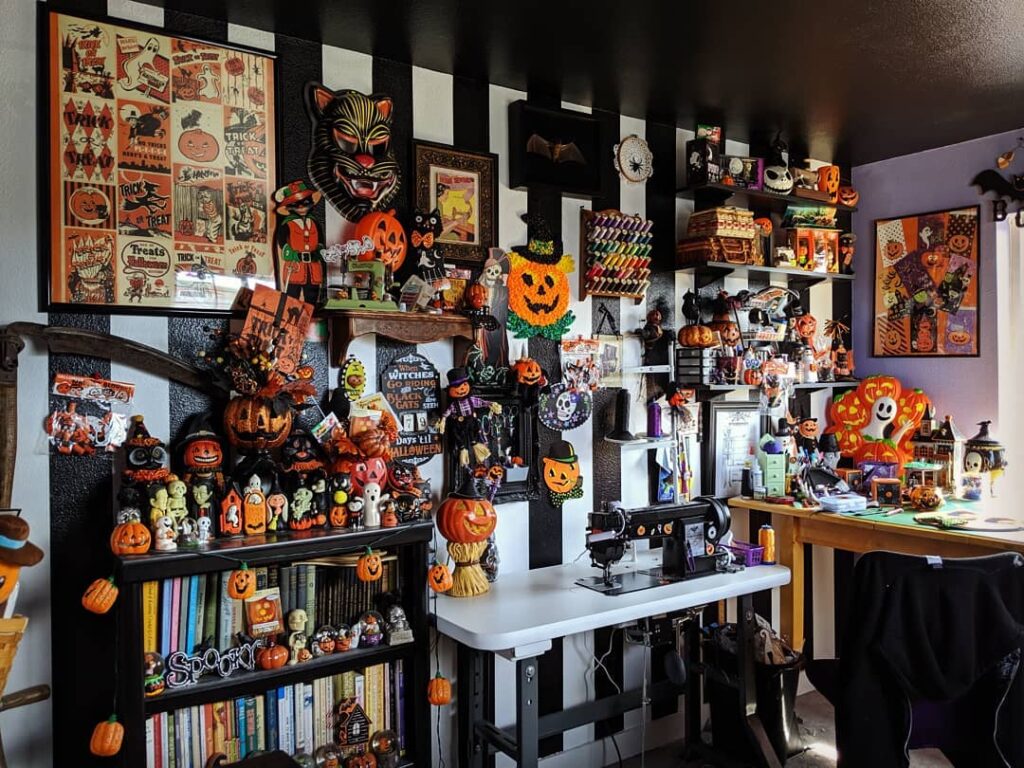
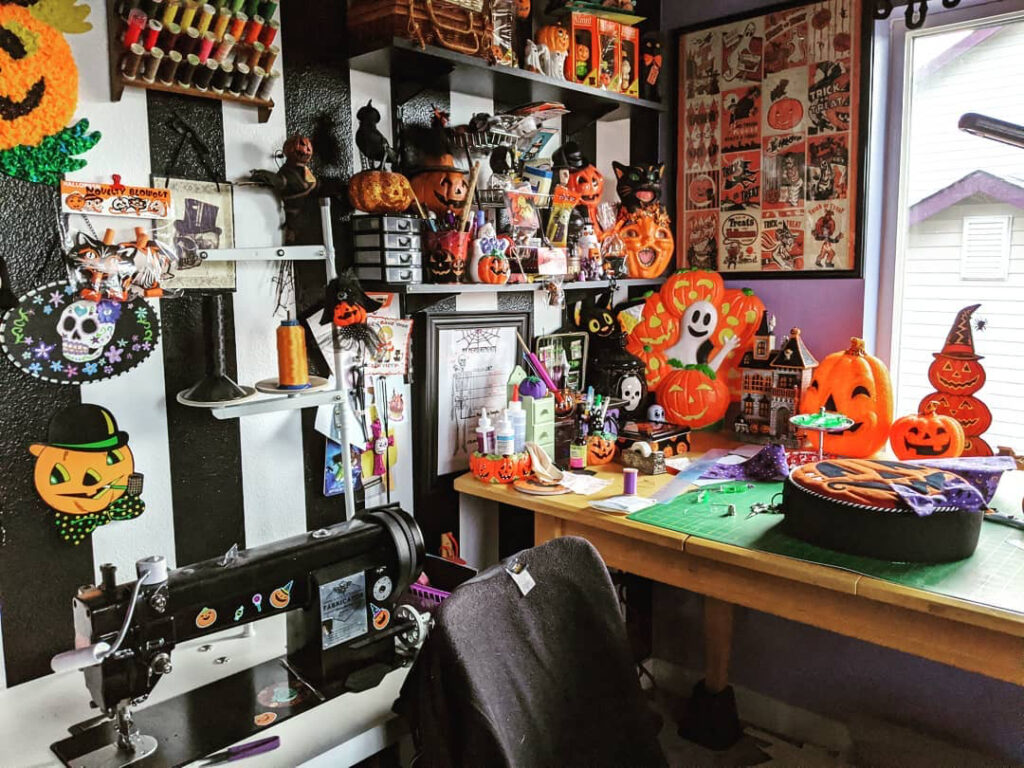
Q. How does the Sailrite Fabricator Sewing Machine fit into your work? What are your thoughts on the machine so far?
A. The year I started shifting my interest toward bag making, I was reading a lot of online blogs and publications in order to get better. I realized that both technique and equipment could further the quality of my projects. A lot of the sources that I was using to perfect my bag making, many of which became my favorite references, had made purchases from Sailrite. They lauded the company for their quality products and services that welcome even the less knowledgeable customer with tons of visual aids. These were visual aids that a first-time industrial machine owner such as myself might encounter. When I browsed the Sailrite catalog I came upon the Fabricator and its sleek black look instantly set it apart from other machines. Knowing how much the people I looked up to loved their machines purchased from Sailrite, plus the added aesthetics of the Fabricator, I knew that it was a machine I would eventually come to own.
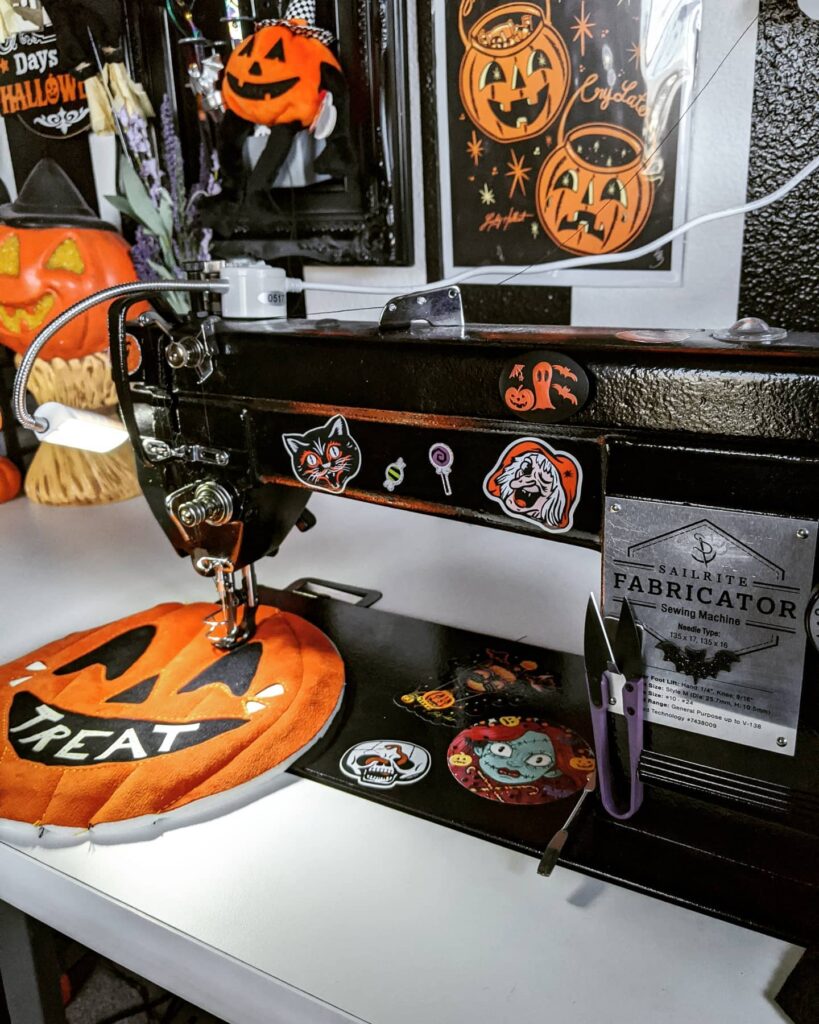
At first, I felt intimidated by the machine; like I didn’t know enough to own such a machine. But any time I have a question about it, the answer is so easy to find, whether it’s found intuitively or by reading the Sailrite website and watching helpful videos. It’s a robust machine and it sews through all my heavier projects quickly and beautifully. I have not felt like I’ve sacrificed anything for the speed. It has a lot of control, which matters when I am zipping through straight lines or slowing to a literal crawl on precise details.
Q. Can you tell me about a project (or projects) you’re most proud of?
A. Any time I create anything that is objectively better than the last time I created a similar item makes me very proud. I’m able to see my growth in the craft I am most passionate about. I’m always looking to improve what I do and that in itself can be a challenge because it’s difficult to be impartial about anything you create yourself. You have to find a way to get better without any other kind of guidance but your own wits. It can be quite a hurdle to overcome with even the smallest of projects.
Q. What’s your favorite part of the DIY lifestyle? What’s difficult?
A. My favorite thing about the DIY lifestyle is not being at the whim of what is trending and available — being able to carve out things that match my tastes and wishes perfectly. If I want it to be Halloween every day, I can make it so! However, the most difficult part of this lifestyle is not having enough time to make all the things I want to make! I have to harmonize personal projects with projects and products I want to add to my shop. It’s a tough balance for a solo crafter!
Q. What are you looking forward to sewing in the future?
A. I hope to do much more detailed work in the future, expanding from pumpkins to other more intricate vintage-inspired Halloween goodies as wearable accessories.
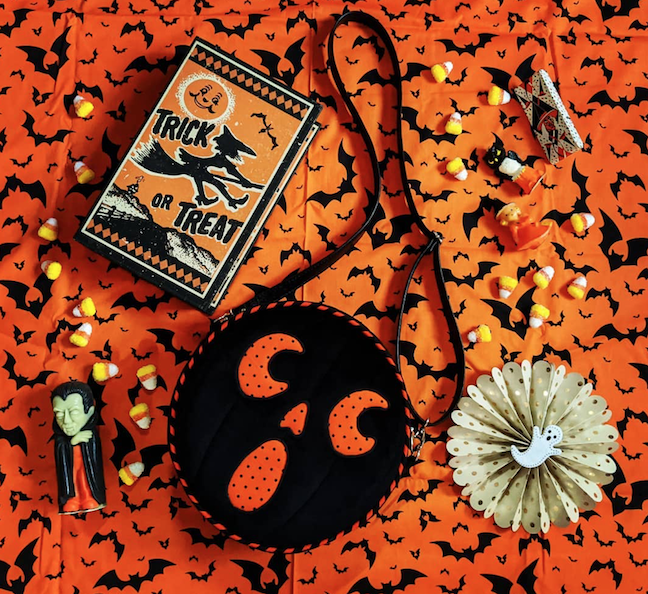
Q. What advice would you give to someone who is new to sewing but wants to create fun DIY projects like yours?
A. Never underestimate the value of small accomplishments! When I started bag making, or clothes making (anything really), I focused on perfecting one thing before moving onto the next. Sometimes that meant making a bunch of “easy things” that seem far removed from a nice jacket or a bag, like pillowcases or zippered pouches. However, I learned to perfect my piping and corners through making pillowcases and installing zippers with lined bags on those little pouches. Every little project builds on your skill, whether you immediately realize it or not. Eventually, you’ll be able to look at projects like mine and say, “Yeah, I know how to make that.”
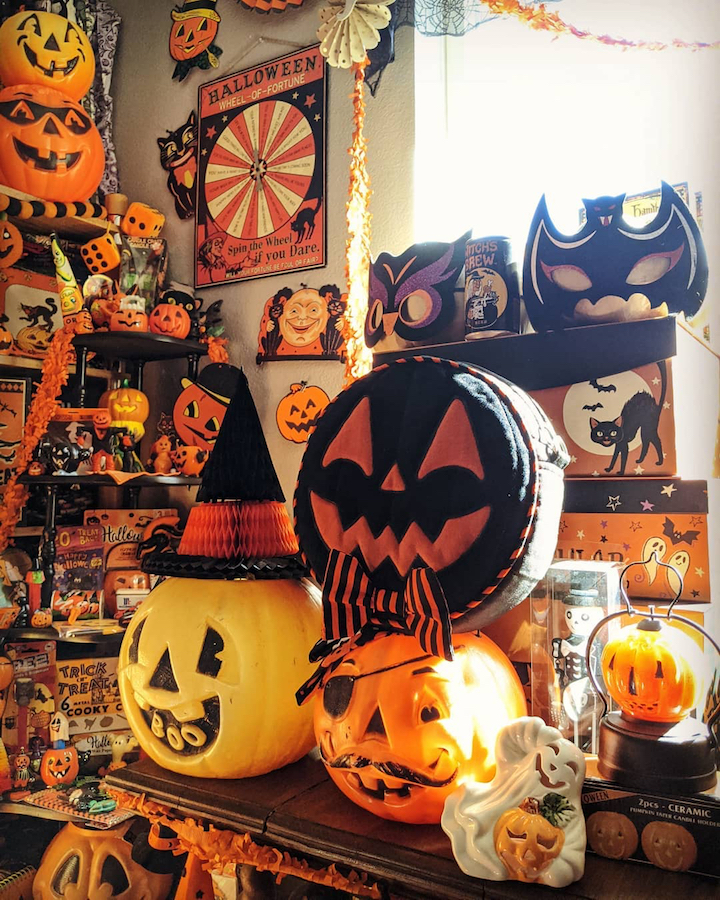
Thank you for sharing your story with us, Mari. We’re looking forward to seeing more of the otherworldly designs you’ll create with the Fabricator. And remember, whether you’re an avid sewist or you’re looking to break into the world of DIY sewing, Sailrite is here for you. With a little imagination, passion and persistence, you, too, can create your dream project. No tricks, just treats!
Who We Are
Sailrite is your one-stop DIY shop! We are a passionate crew of do-it-yourselfers who strive to equip you with the supplies and how-to knowledge you need to tackle your next project. Do you want to learn upholstery, leatherwork, canvaswork, hobby sewing, bag making or more? We have the fabric, tools, hardware, sewing machines and notions you need to master any DIY. And even if you’ve never sewn before, our tutorials and how-to videos are designed for beginners and experienced crafters alike.
Start your DIY journey today: www.sailrite.com

